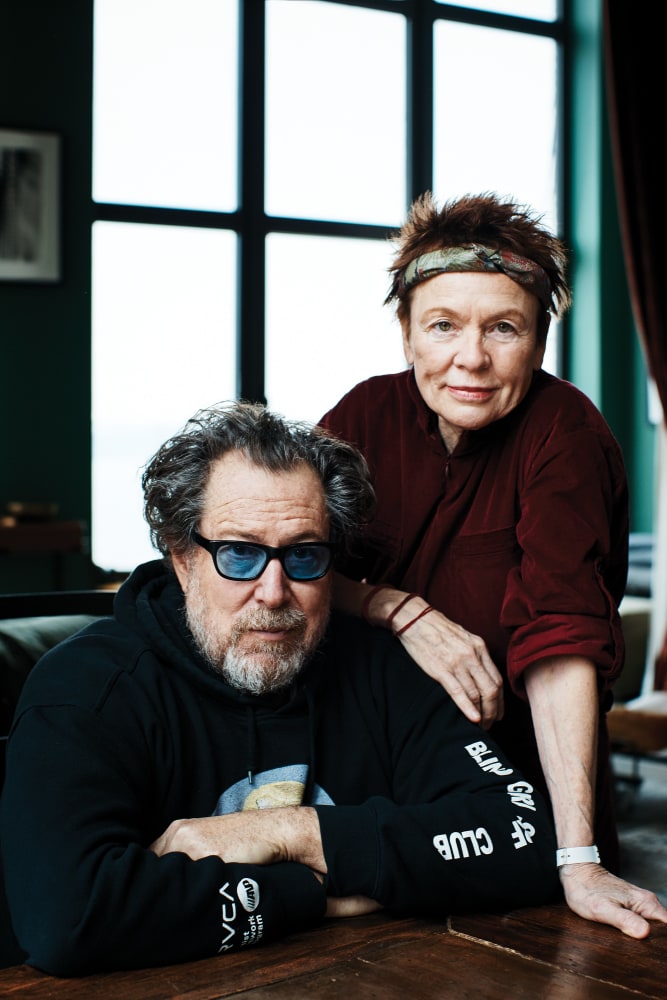
Julian Schnabel and Laurie Anderson at her Greenwich Village home.
WESTON WELLS FOR ARTNEWS
Laurie Anderson has been working and performing in many different mediums since the 1970s, when she came of age in a downtown New York milieu in which art forms expanded and boundaries between genres began to blur. She became a pop music star when her song “O Superman” hit the charts in 1981 and helped propel her album Big Science into the new wave canon, but she never ceded her avant-garde credentials as she continued to experiment and collaborate widely. In 2015, at the Park Avenue Armory in New York, she presented a high-profile staging of Habeas Corpus, a multimedia installation work that included video footage of Mohammed el Gharani, who had been detained by the U.S. military at Guantanamo Bay for more than seven years and struggled to find freedom after he was released. A restaging of that piece will feature in a major survey of Anderson’s work opening in May at the Hirshhorn Museum and Sculpture Garden in Washington, D.C.
Julian Schnabel—who got to know Anderson by way of her late husband, musician Lou Reed; they were married from 2008 until his death in 2013—rocketed to fame as a painter in the ’80s, when his big, brash, and expressionistic style ran counter to convention in the New York art world at the time. In recent years, he also established himself as a filmmaker, with features including Basquiat, Before Night Falls, The Diving Bell and the Butterfly (which was nominated for four Academy Awards), and At Eternity’s Gate, the latter starring Willem Dafoe as Vincent van Gogh. Schnabel has a show of paintings, opening March 6 and running through April 18 at Pace Gallery in New York, that features large new works made on materials procured in Mexico.
Both artists joined ARTnews in conversation at Anderson’s home in Greenwich Village.
ARTnews: What is the earliest formative memory you have of an experience with art?